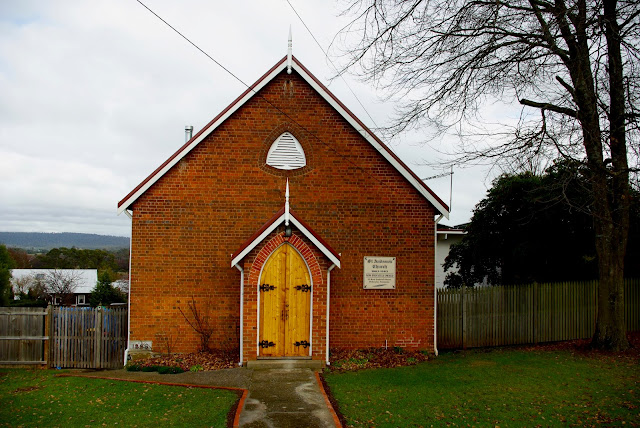No. 185 - Former Winkleigh Methodist Church - 'All the Apothecaries in Tasmania'

Built in 1891, the Winkleigh Methodist church was removed to nearby Exeter in 1951 for use as a hall and it now stands behind the Exeter Uniting Church. The Wesleyans were active in Winkleigh in the1860’s sharing a church with the Presbyterians that had been built by Thomas Stonehouse for use by “no particular sect”. By the 1880’s Stonehouse’s church had fallen into a state of disrepair and an issue of ownership of the land further contributed to the ending of the collaboration between the two denominations. The somewhat partisan Winkleigh correspondent for The Examiner agitated for the construction of a new church: “A short time ago it was mooted in my hearing that it (the church) was likely to go through repair shortly. Ah, I think it will not be advisable to try that, because it is sure to be a failure. I defy all the apothecaries in Tasmania to compound a dose sufficiently nutritious to place that chapel in a state of convalescence. It was past cure long ago; it is riddled with di




